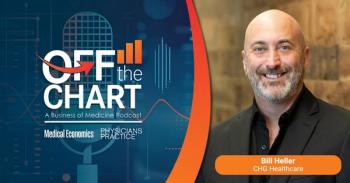
The truth behind growth of the 340B prescription drug program
The pharmaceutical industry has increasingly taken aim at the program for growing costs, but is that accurate? American Hospital Association analysts offer this perspective.
The 340B Drug Pricing Program was created by Congress in 1992 to help hospitals and other safety-net providers manage
In effect, 340B benefits everyone — pharmaceutical companies get their drugs covered by two of the largest national customers; eligible hospitals and other providers get discounts on drug purchases, which frees up resources to finance needed health programs and services for their patients; and patients benefit from having access to these programs and services that improve their health and well-being.
Despite these many benefits, pharmaceutical companies increasingly have taken aim at the program, complaining that it has grown “out of control” and is not operating consistent with congressional intent. These claims rely on falsehoods and fuzzy math. Among their many mendacities, pharmaceutical companies have repeatedly misstated Congress’ purposes for establishing the program, 340B hospitals’ use of the program, and, particularly bewildering, the impact of the program on drug manufacturers’ bottom lines.
The facts here are simple: (1) the 340B program has experienced growth since its inception; (2) that growth, in large part, has been due to pharmaceutical companies’ pricing strategies and market-domination tactics; and (3) despite program growth, 340B discounts still account for only a
Below we discuss these facts in more detail.
Indiscriminate price increases
Pharmaceutical companies raise drug prices indiscriminately. A
Record high prices for new drugs
Pharmaceutical companies are introducing new drugs at record high prices. A
Blocking competitors
Pharmaceutical companies increasingly employ profit-driven, market-domination tactics that keep lower-cost alternatives off the market. To sustain their profits from brand-name drugs, pharmaceutical companies often employ strategies to delay or prevent the entry of lower-cost generic medications into the market. For instance, they introduce slightly modified versions of existing drugs to extend the monopoly period or create a complex web of patents covering different aspects of a single drug, making it difficult for competitors to navigate. In other cases, pharmaceutical companies pay generic manufacturers to not bring their generics into market. These “pay for delay” schemes cost consumers and taxpayers more than $3.5 billion annually, according to estimates by the
Marketing specialty drugs
Pharmaceutical companies invest heavily in marketing and producing high-cost specialty drugs. Though it is estimated that less than 2% of the U.S. population uses specialty drugs, this market has experienced tremendous growth and is expected to only grow more. According to an
Big Pharma decisions
Collectively, these facts demonstrate that 340B program growth is a direct result of the decisions made by pharmaceutical companies — not a function of nefarious hospital behavior. This does not even account for other factors that have also influenced 340B growth, including regulatory policies pushing more services to be delivered in the outpatient setting and advances in technology and medicine that have enabled the use of outpatient drugs as a substitute for complex surgeries.
Proverbially speaking, as pharmaceutical companies throw stone after stone at the 340B program, they should beware of their own glass house. Their complaints ring hollow when it is clear that their own actions are driving growth in the program. And their house is especially fragile when one realizes that a) drug company profits are at
For all of these reasons, policymakers and the public should reject the fabrications perpetuated by pharmaceutical companies. Instead, they should work to protect and support the 340B program and the benefits it affords to countless patients and communities across the country.
Bharath Krishnamurthy, MPH, is the director of health policy and analytics at the American Hospital Association. Prior to joining AHA in 2019, he served as senior manager of research at 340B Health.
Megha Parikh, PhD, MS, is the associate director of health analytics and policy at the American Hospital Association. Prior to this, she served as a senior research scientist at the Pharmacy Quality Alliance, where she led and contributed to projects on medication use quality.
Newsletter
Stay informed and empowered with Medical Economics enewsletter, delivering expert insights, financial strategies, practice management tips and technology trends — tailored for today’s physicians.








